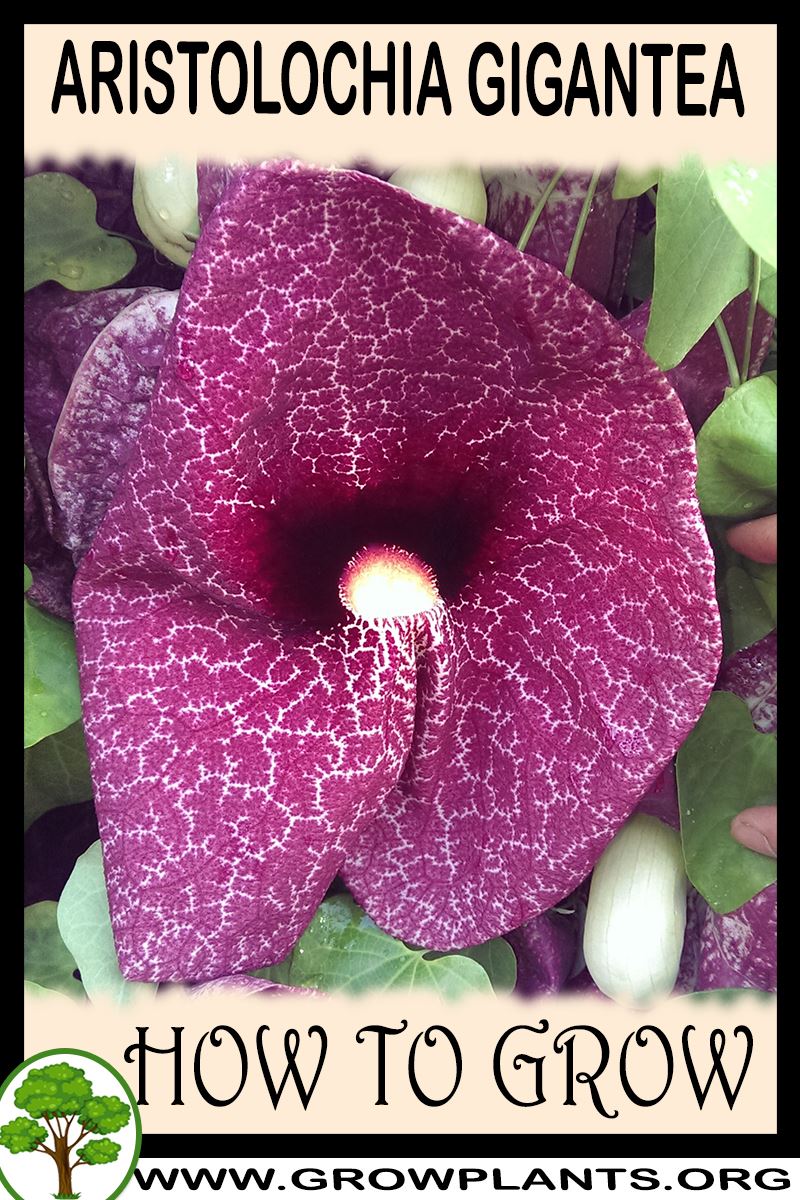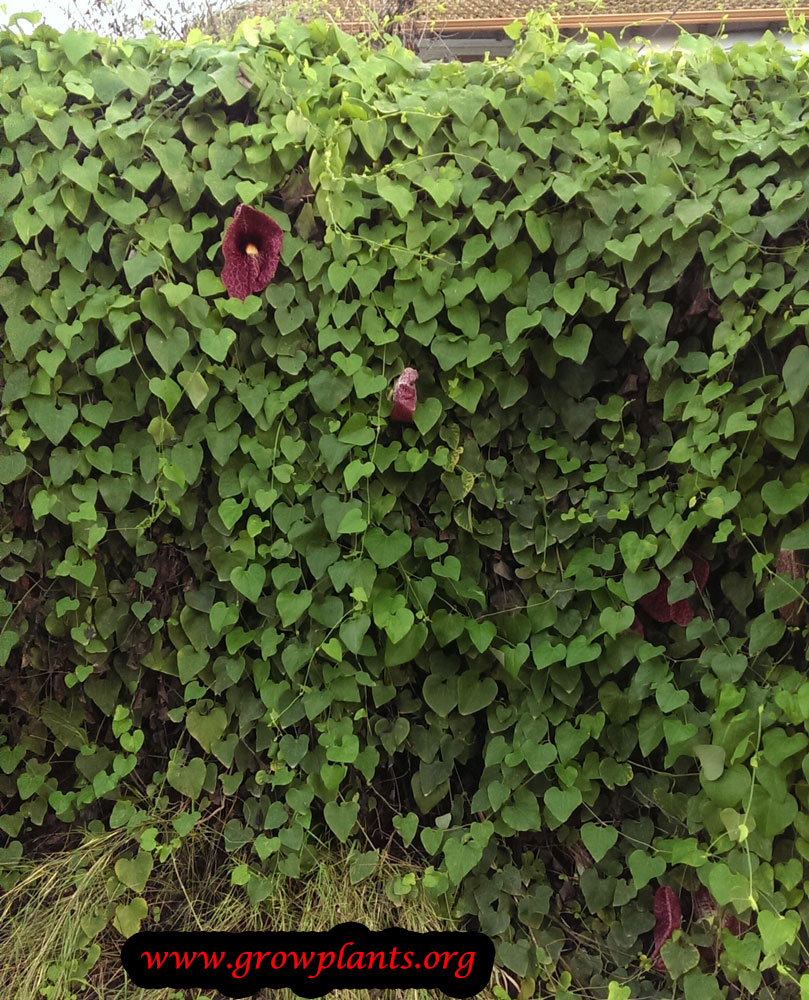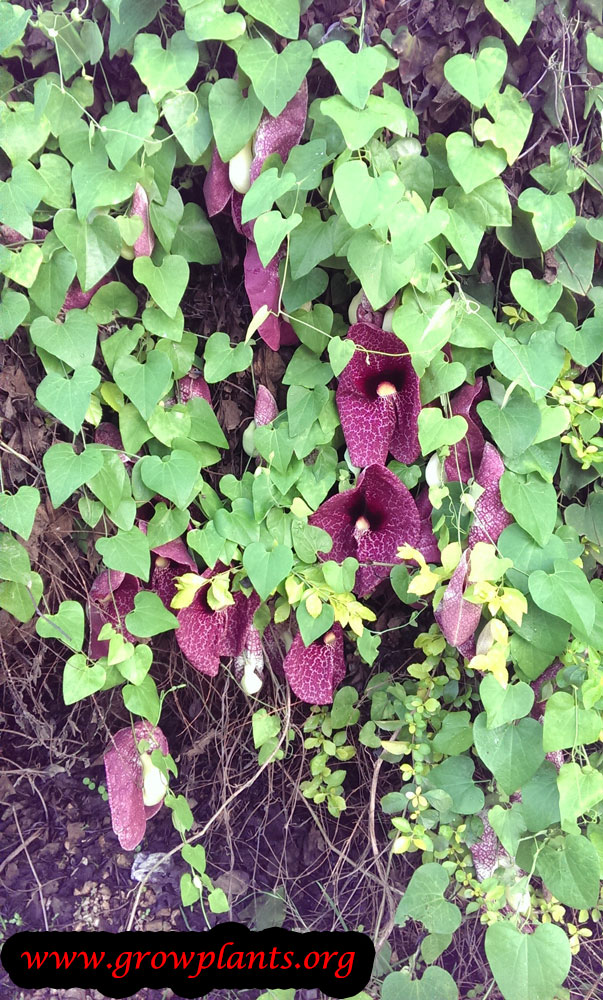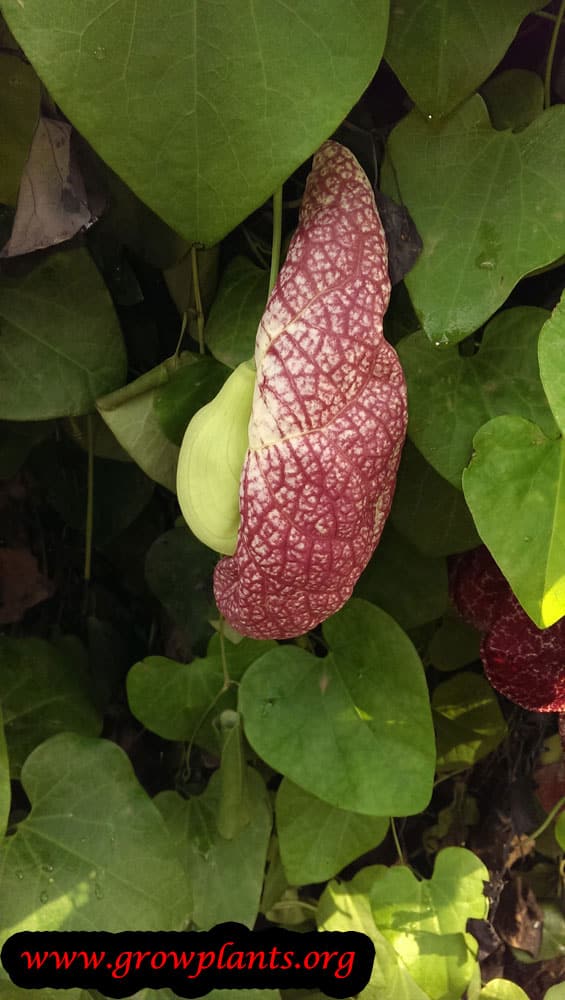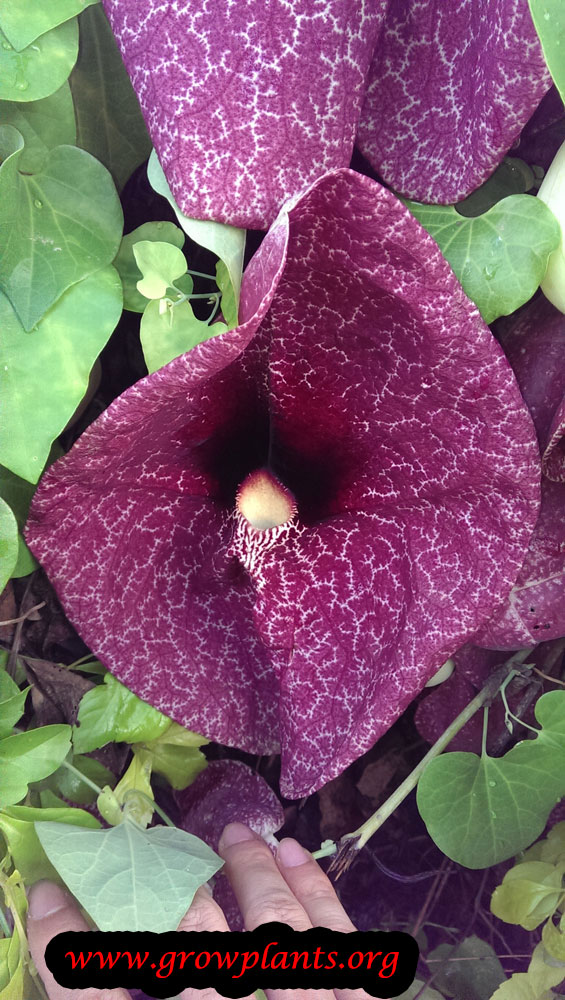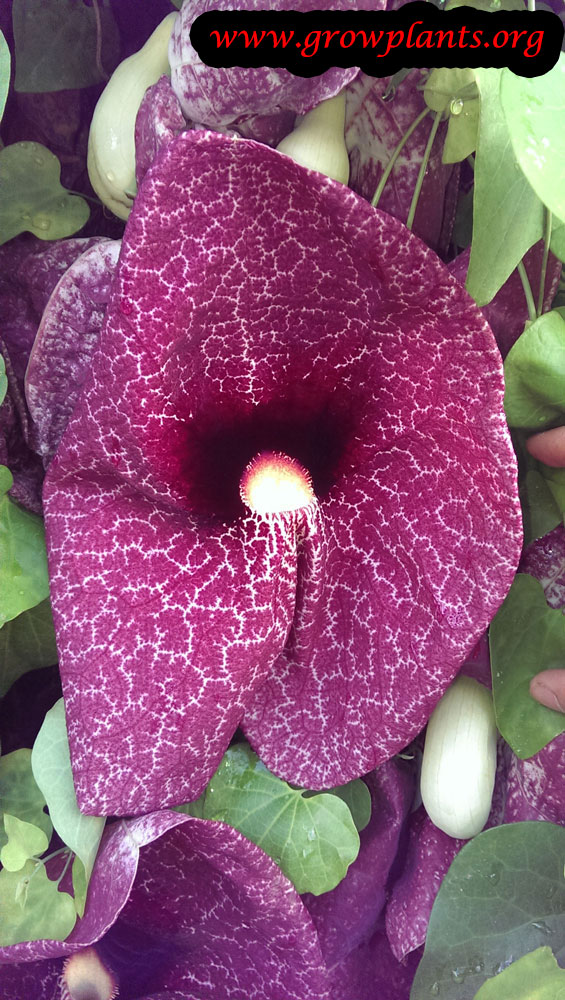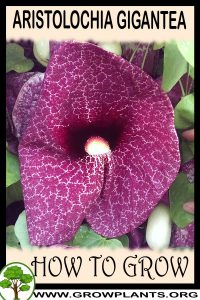
Aristolochia gigantea grow and care – herbaceous vine of the genus Aristolochia also known as Giant pelican flower, Aristolochia gigantea perennial evergreen or deciduous in cold climate used as ornamental hedge plant or ground cover plant, can grow in tropics, subtropics, mediterranean or temperate (as annual) climate and growing in hardiness zone 10+ as perennial 5-9 as annual.
Leaves color green to light green in heart shape.
Aristolochia gigantean flower
Flower color can be: purple, pink or red the colors organized in pattern with white in the inner can be yellow, black or both, the shape of the flower is like pipe in the base it’s like a sack and the end it’s like trumpet the flower 10-18 cm can be bigger.
Aristolochia gigantea for sale – Seeds or Plants to Buy
How to grow Aristolochia gigantea growing and care:
Frost free, trellising
What is the best way to start growing?
Plant / Seedling / Seed / Vegetative Reproduction
Is it necessary to graft or use vegetative reproduction?
No
Difficulties or problems when growing:
Invasive
Planting season:
Spring
Pests and diseases:
Aphids
Pruning season:
Autumn / Winter
How to prune:
Just for control and desgin
Size of the plant:
2-10m, 6-30 feet
Growth speed in optimal condition:
Fast growing
Water requirement:
Average amount of water
Light conditions in optimal condition for growing:
Full Sun / Half Shade
Is it possible to grow indoor as houseplant?
No
Growing is also possible in a planter, flowerpot or containers:
Yes
Blooming information
Bloom season?
Spring / Summer / Autumn
General information about the flower:
Purple, pink or red the colors organized in pattern with white in the inner can be yellow, black or both, the shape of the flower is like pipe in the base it’s like a sack and the end it’s like trumpet
Scientific Aristolochia gigantea:
Aristolochia gigantea
Categories
| Blooming Seasons |
|
|---|---|
| Flower colors |
|
| Climate |
|
| Ornamental parts |
|
| Plant growing speed |
|
| Plant life-form |
|
| Plant Uses |
|
| Planting Season |
|
| Plants sun exposure |
|
| Watering plants |
|
| Hardiness zone |
|


